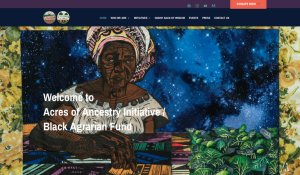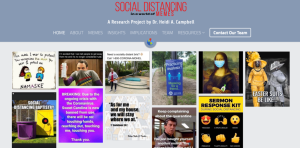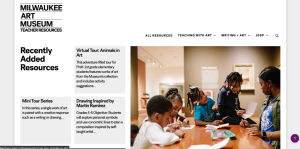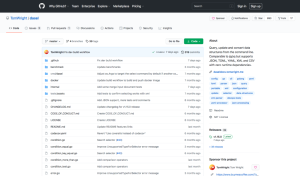Theme: Agriculture
Back to Top
|
 |
|
AgFuse
|
Social studies |
|
Think Facebook, but specific to farmers. Founded by Pat Rogers, a family farmer in South Carolina, AgFuse fills the need for a convenient platform to share agricultural knowledge.
Like any other social platform, AgFuse is designed for connection, with the ability to tailor one's feed based on location and interests. Interested readers will be welcomed into a network of more than 5,000 professionals hailing from 64 countries. Once users create a free account, they have the ability to share agriculture tips, seek advice, follow other allied professionals, form groups, and promote research or businesses. For a sneak preview of the valuable content found on the site, check out the "Popular Articles on AgFuse" section of the landing page. Additionally, users new to the site may want to begin by browsing the AgFuse Help Center (found via the menu icon in the top right corner), a helpful guide that explains the platform's key features. AgFuse is available on the Apple Store and Google Play, or at the link above; plus, users can connect with the platform on Facebook and Twitter (@AgFuseNetwork on both). [EMB] |
|





|
|
 |
|
Agriculture on the proving grounds: Damage and loss
|
Science |
|
The COVID-19 pandemic affected nearly every industry, and agriculture was no exception. However, the agricultural sector is no stranger to dealing with the impacts of disasters, particularly with heightened vulnerability from climate change. This data summary from the Food and Agriculture Organization of the United Nations explores the economic and nutritional consequences of disasters within the agricultural sector. The summary focuses on "the top five most impactful disasters (in terms of their toll on agricultural production systems) to strike least developed countries (LDCs) and low to middle income countries (LMICs) from 2008-2018." These five disasters are drought, floods, storms, pests, and wildfires. In addition to text summaries, the resource also embeds audio from farmers around the world, adding first-hand narrative to the story. Readers will also find informational figures detailing nutritional loss resulting from these disasters. Collectively, this information informs disaster management, and key management strategies are highlighted at the conclusion of the piece. Also available at the conclusion of the piece is a link to download the full report. [EMB] |
|





|
|
 |
|
Food For Health
|
Health |
|
Food is both a necessity and "a topic of endless discussion." Readers interested in food production and selection, from agriculture to nutrition, may enjoy this resource. The Canada Agriculture and Food Museum's Food for Health portal is packed full of interesting content, from practical tips like how to read a food label to a historical look at the evolution of food safety. The portal is divided into five sections: Food and Farming, Labels and Packaging, Food Safety, Health and Nutrition, and Food for Thought. Of course, the Food and Farming section is particularly on theme. Here, readers can explore various agricultural models, browse planting tools, and introduce themselves to biotechnology and other aspects of agricultural science. Educators and caregivers will also want to scroll to the bottom of the portal and click on the "For Teachers" link, which pulls up lesson plans and activities for young learners. Food for Health is funded by Nestle, the Government of Canada, and Bernardin. The site can also be accessed in French, using the button in the top right corner. [EMB] |
|





|
|
 |
|
Acres of Ancestry
|
Social studies |
|
The Acres of Ancestry Initiative highlights the "400-year Black agrarian liberation struggle," and "re-centers ecocultural traditions in collaboration with rural communities throughout the Black Belt region," through various projects. For example, the Return of the Bees Multimedia Project tells the story of "southern Black agrarian material culture," sharing the perspectives of heritage quiltmakers who used their artistry to supplement their farming incomes and further the Civil Rights movement. In addition to the text summary, readers will find two embedded videos; the first is the short film Return of the Bees, a compilation of interviews and stories related to the project, and the second features an interview with Cookie Washington, a fiber artist. Another project, Gunny Sack of Wisdom, uplifts the voices of Black social thinkers, including activists, farmers, and writers. Named for the burlap bags used during chattel slavery and sharecropping, the project honors Ancestors who, "like the sturdy gunny sacks that carried their daily labor," remained committed to each other and future generations. Readers will also find information about upcoming Events, a collection of relevant news stories (under Press), and links to various social media channels. Black Belt Justice Center, a legal and advocacy nonprofit organization supporting African American farmers, landowners, and communities in the Black Belt region, serves as the fiscal sponsor. [EMB] |
|





|
|
 |
|
On the Farm STEM: Ecosystem Dynamics & Interactions
|
Science |
|
Designed for middle school classrooms, this agricultural curriculum covers ecosystems, animal behavior, and symbiosis, using prairie chickens as the main characters. The red box labeled "Ecosystem Dynamics & Interactions" links out to a Google document that neatly categorizes everything that educators will need. The "Unit Overview and Front Matter" and "Unit Skeleton" items, located at the bottom of the document under Additional Resources, are great places to start. Here, educators can find a summary of the core themes addressed in each lesson plan before committing to the materials. The entire unit contains 17 lessons, each with its own teacher guide, lesson presentation, and student handouts. The box at the top of each teacher guide also indicates how long the lesson is expected to take (generally a couple of days). Educators can sift through resources individually or download the entire package via Google Drive. The unit was created by the Food and Agriculture Center for Science Education in collaboration with several other agricultural groups. [EMB] |
|





|
|



















